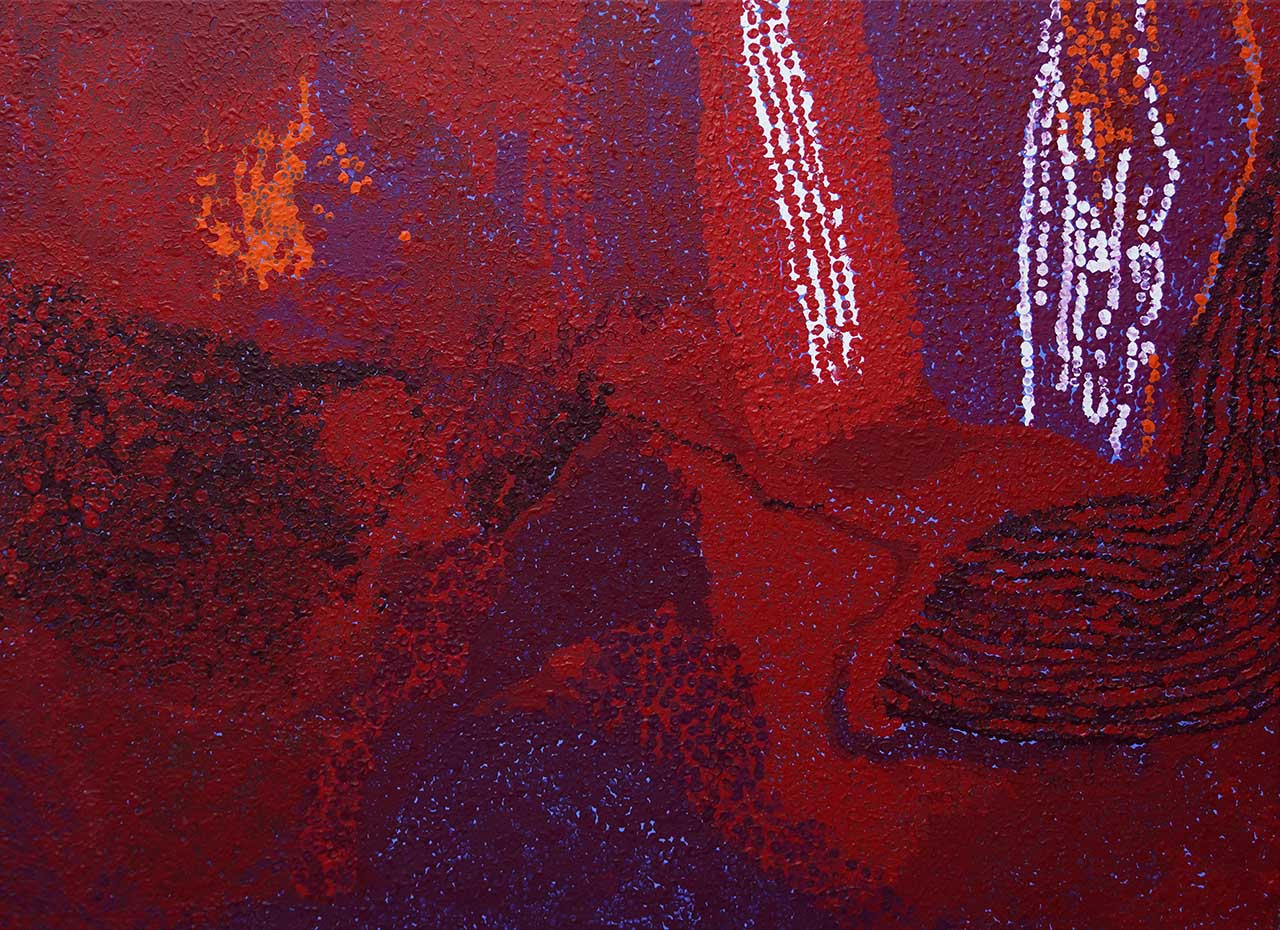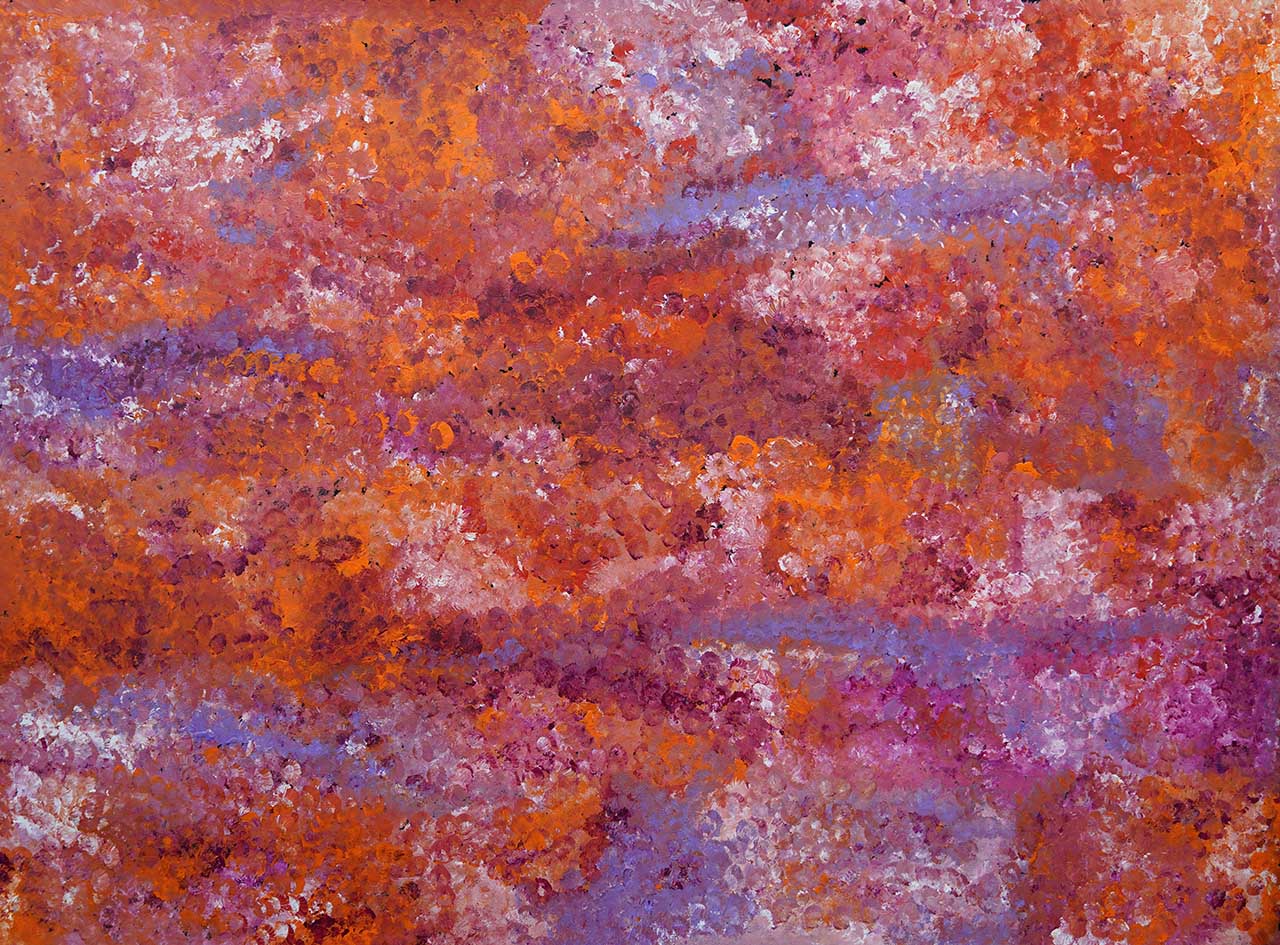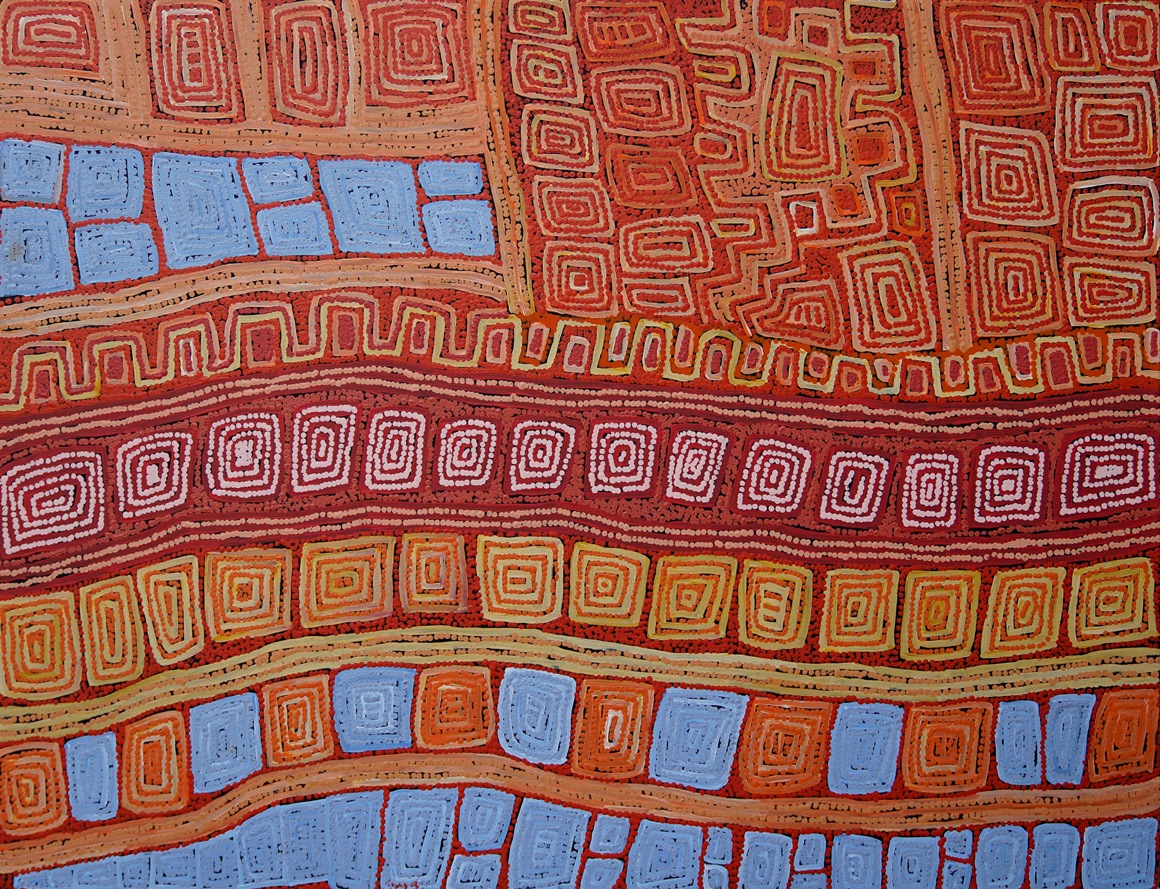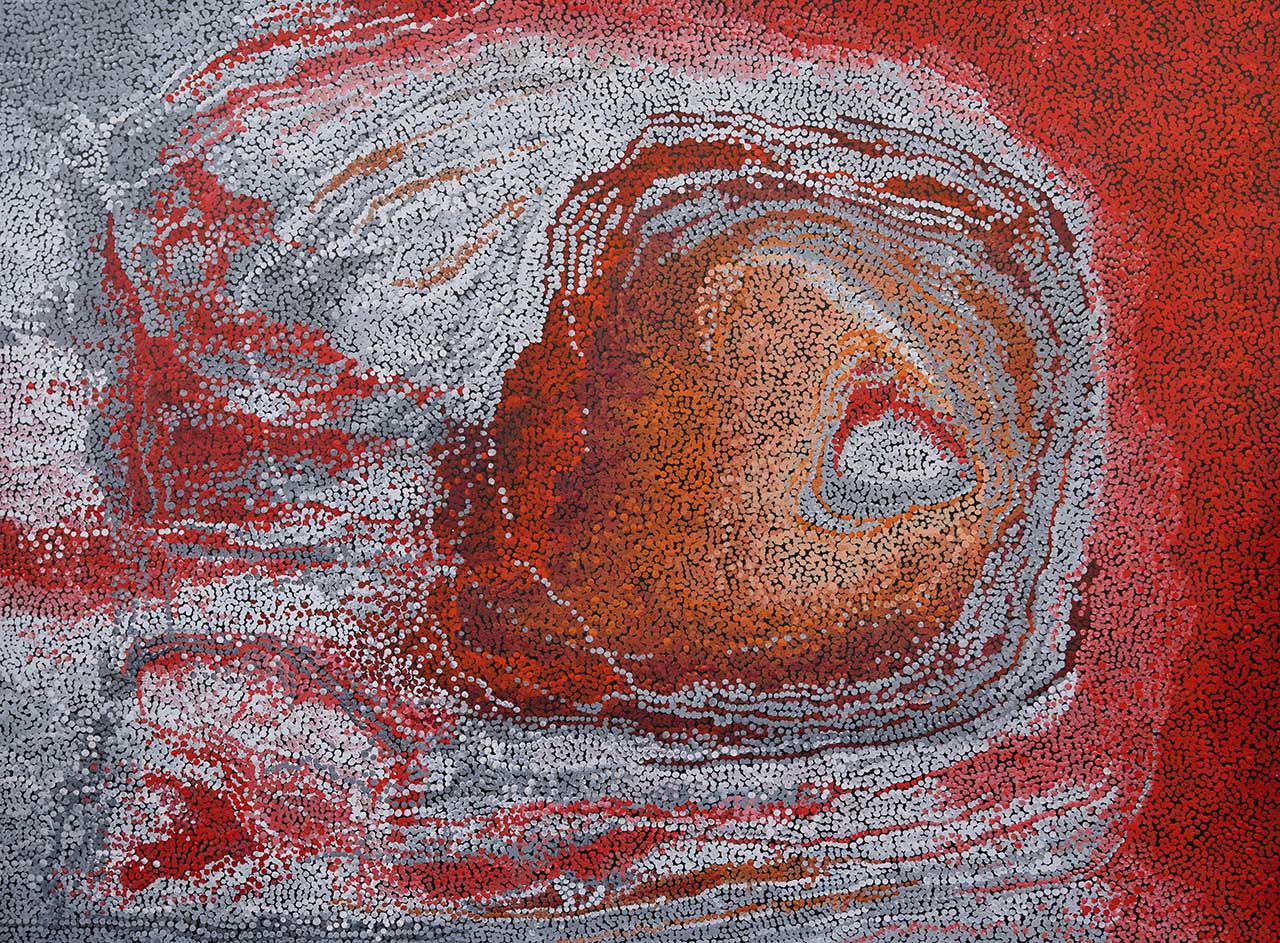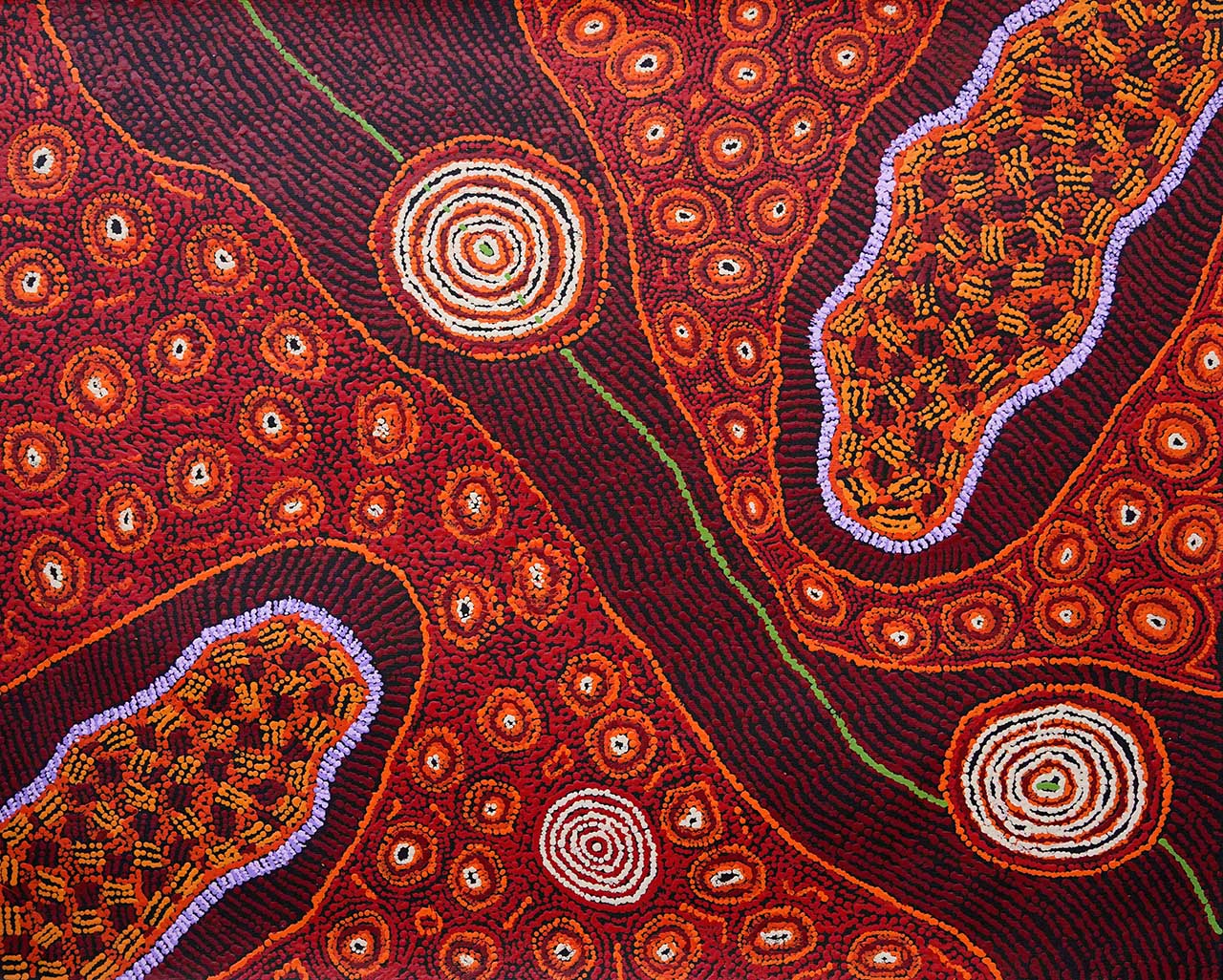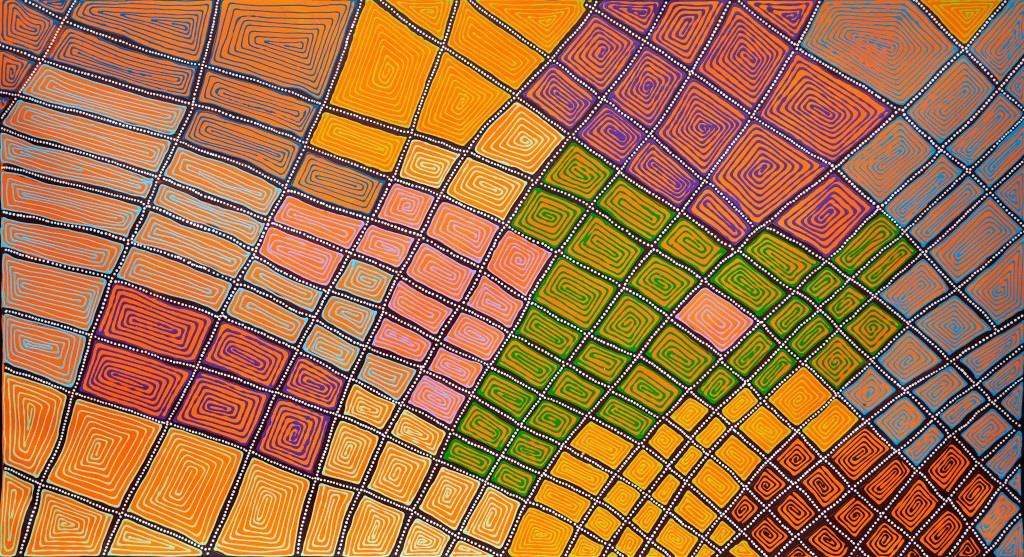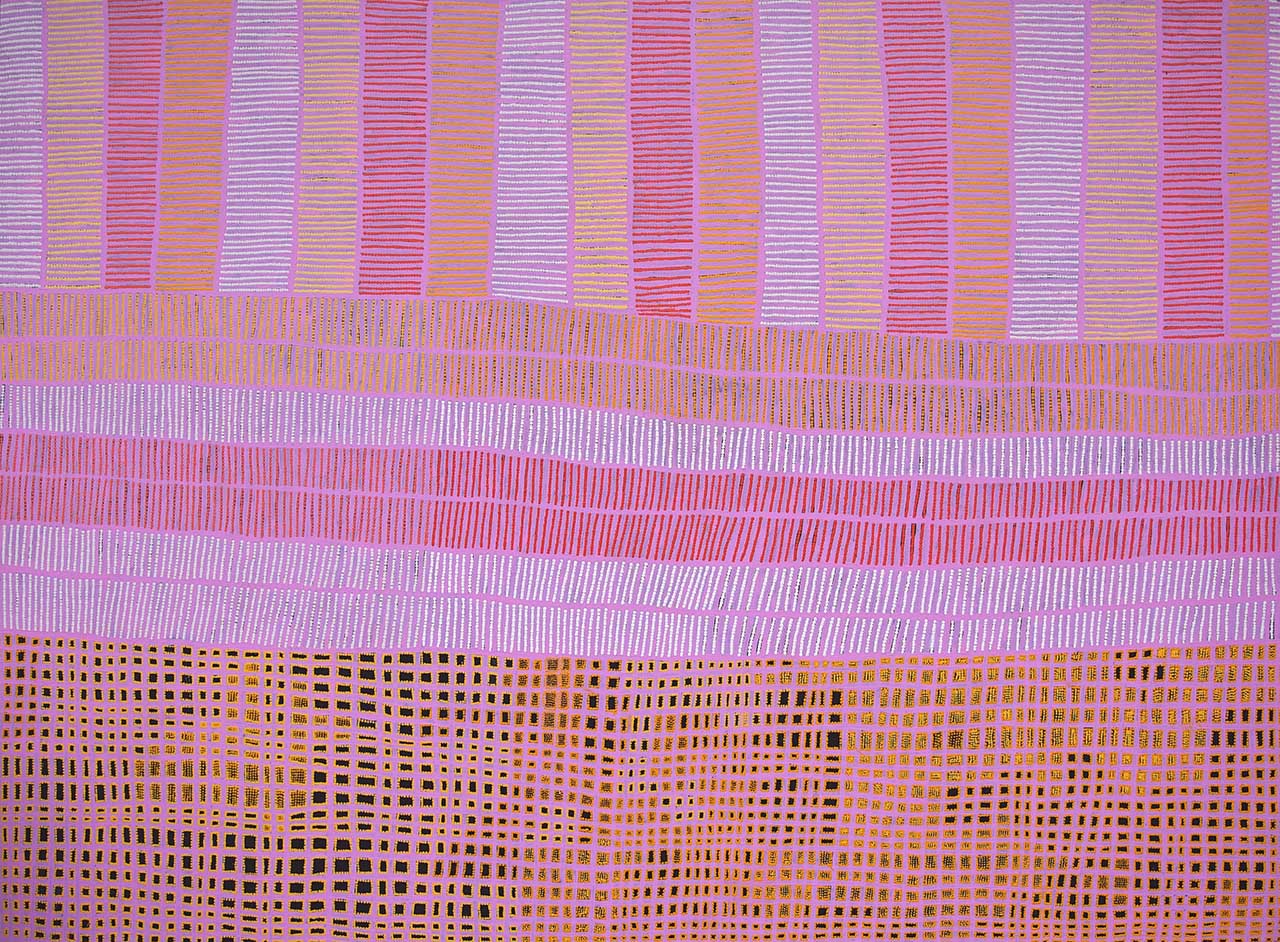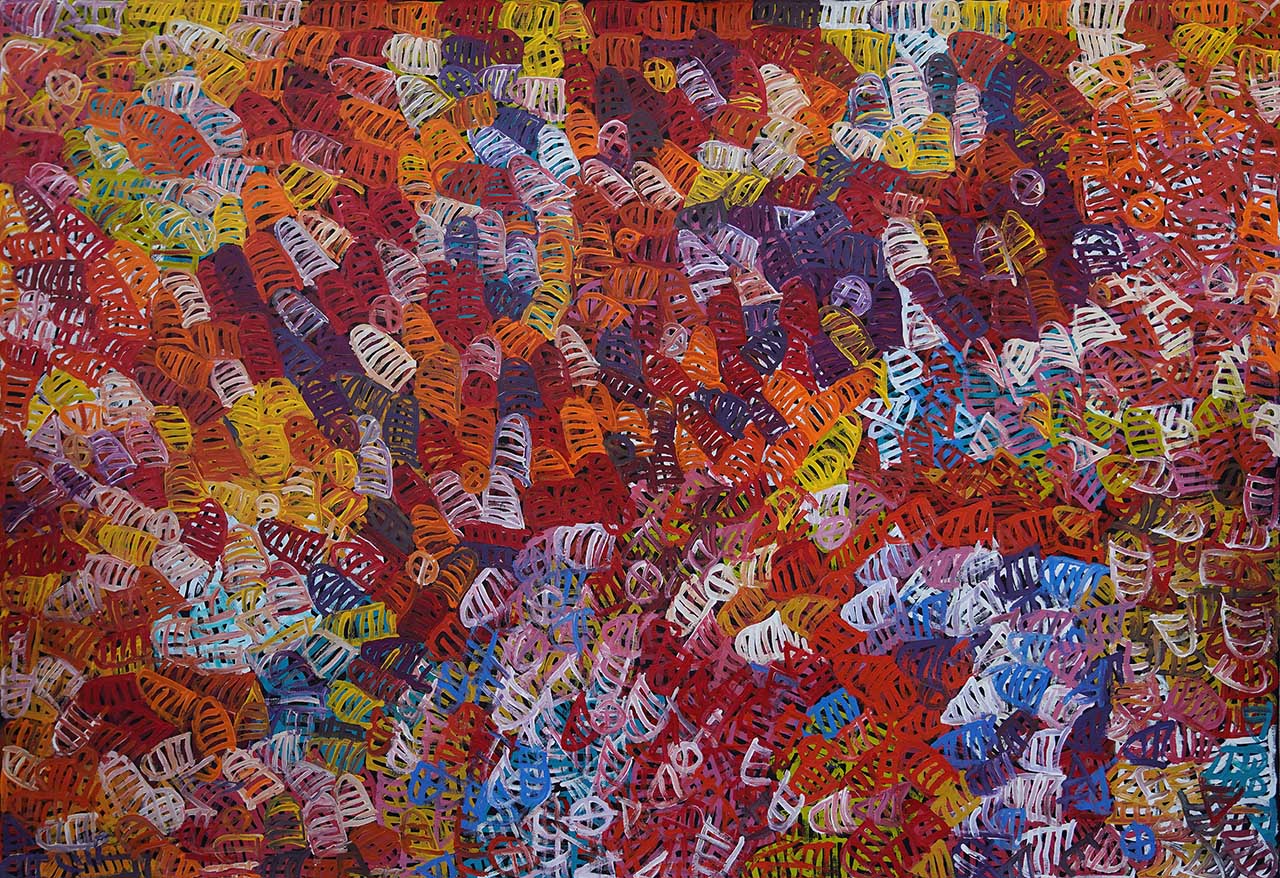Let’s Take A Look Through The Landscape Colours Exhibition
In this article David Wroth takes you for a walkthrough of The Landscape Colours exhibition.
The Landscape Colours exhibition draws together some of the best-known artists along with some other great artists represented by the gallery. The concept was to show how Aboriginal people respond to landscape. We also wanted to showcase the colour palettes that they use. It can be tremendously diverse, and it’s not just about the land, but also about the metaphysical maps that sit over the land.
In many ways, the colour is showing the significance of the country and of the stories that are embedded in that country. Aboriginal artists are using colour to give a dynamic feel to their representation of country, to show the power of their country, to show the whole significance of their culture connected to that land. Many of these works involve aspects of the seasons, and the changing natural world over the year on country that they know so well.
The first painting of this exhibition is a large red painting by Tommy Watson. You get the momentum of the country, you get the strength of the country. You get to feel the artist’s whole recognition of that importance of place to him. It is expressed in these very deep, rich, very resonant colours that all come together to make it a high impact painting.
The next painting on the wall is one by Gabriella Possum showing her Grandmother’s country. She draws on a palette that’s very much connected to her famous father, Clifford Possum Tjapaltjarri. She uses extremely warm but in some ways subdued colours – pinks, mauves, pale blues, smoky blue-greys. A palette that’s quite distinctive and connected to a family style, both to Gabriella and her sister Michelle.
The entire painting is rich with colour. It’s got contrast, it’s got emphasis in different sections of the painting where the yellows, and the reds really jump out against other areas of much darker colour. It has the title ‘Grandmother’s Country’, so it’s a homage to the country that Gabriella inherits through her family lines on the women’s side.
There are several works by Gloria Petyarre in this show. Gloria is known as a colourist. She paints the Bush Medicine Leaves. The colours she chooses are reflective of the country where the medicine leaves are harvested. There are beautiful blues and greens showing the big leaf version of Bush Medicine Leaves. It is classic Gloria Petyarre – you can see the movement, you can see every brush strokes, you can see the strains of colour as she’s spread the paint on the canvas. This is a very beautiful work from her.
There are also a number of paintings from Polly Ngale from Utopia. Polly is a very senior painter. Here she is painting the Bush Yam story, that is central to a series of paintings that she produces. There’s one very large painting that features mauves and pinks, overlaid with oranges and reds. It humming with colour. It’s saying ‘the desert’, it’s saying ‘the ripening of the Bush yam’. Those little echos of mauve suggest there is some water and some coolness on the country, but it’s very fertile land. It feels very generous. This painting is beautifully coloured and it’s Polly Ngale’s recognition of country. This is expressed in pure colour because there’s really no figurative elements or symbols in this painting at all. It’s just a joyous expression of colour on a very big canvas.
Patrick Tjungurrayi’s painting in the exhibition is classic imagery from this Western Desert artist. It has the great Tjungurrayi motifs, the travelling journeys across Country. All the small boxed sections, the rectangles marked out in different colours….lines against rows of dots. And for this artist the Country is all about the Creation story that leads to its embodiment in the landscape. You can almost feel the journey lines going through the country. Patrick Tjungurrayi’s painting is made up of the symbols that tell of the creation of the land. There’s very little to represent the landscape that we would recognise as country, but we can certainly recognise the power of the creation story that brings his country to life.
A single painting by Helen McCarthy Tyalmuty is her perfect expression of aspects of country. She’s painted an image of anthills. The whole painting is rows of flowing colour, almost like contours, like the wind blowing around a form that’s locked into the landscape. We feel the movement in the colour. We feel the movement in the shapes. Her beautifully expressed dot painting overlays multiple tones of colour and comes up with the most extraordinary soft gradations from one area of the painting to another.
Unusually Helen has combined tones of grey against tones of red. So it’s not a combination that we see very often with Aboriginal artists’ work. That said, Aboriginal artists draw on their emotional responses to country, and there is no prescription of how colour is put together. It’s purely in the eye of the artist, and the way they choose to express their country.
This work from Gracie Ward Napaltjarri contains some recognisable characteristics that we often see in Western Desert paintings. There’s the classic iconography of concentric circles, rock holes and terrain. There are hills and contours. It’s a recognition of her grandmother’s country. It’s also either dry river beds, or the contours of the hills are marked out in strong desert colours. This is a classic view of what map making in a Western Desert sense might look like. It uses colour to reinforce the iconography. You are very aware of the hot, intense desert colours.
There’s a painting by Yondee Shane Hansen, who is a West Australian Nyoongar painter. It shows the fragmentation of rock. It’s about the surface of rocks in the country. The area is broken up with a diagonal set of black lines set off with white dots. Every rectangle that’s been defined is picked out in contrasting colours. You can see unusual combinations of mauve and orange, and green and orange. The effect is transforming that view of country, so this is more than just rocks, this is about the Aboriginal occupation of country. Every symbol in that painting is suggestive of Aboriginal occupation around that rocky country. In a way, it’s claiming the land, as well as painting the land and representing it.
Kim West Napurrula has painted an extraordinary painting expressed in soft pinks, yellows and whites. It represents sandhill country. In the lower sections you can see the places where the women gathered food. It is like a checkerboard area in pink across a black background. There’s something in the way that the different sections of the painting form different patterns and line structures. There’s one continuous colour sensibility right through the entire painting. It is defining areas of where people come through sandhill country and into productive land where resources can be harvested. It is essentially an extraordinary combination of colour and pattern to express ancestral country.
Emily Pwerle has painted an Awelye or body painting design. Emily is a sister of Minnie Pwerle who was very famous as the exponent of women’s body painting from Utopia homelands. This work by Emily is beautifully executed. All three Pwerle sisters were painting very late in their lives. They have found a way to transform the ceremonial aspect of women’s culture at Utopia into a vision of country that is focused around the people who are carrying out ceremonies and cultural practice – rejuvenating the country through ceremony and keeping the social bonds strong through ceremony. This is a recognition of country and of culture coming together. This multi-coloured work is made up of small symbols representing the body painting patterns used by the women whenever they performed ceremony.
Related artists:

